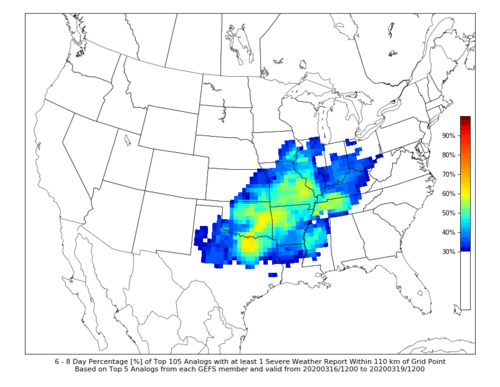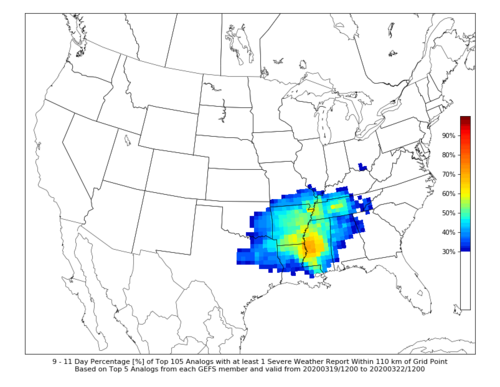Alex Elmore
EF2
In addition to the ERTAF forecast linked above by Jeff (valid 3/15-3/20), CIPS extended range has also pegged a similar area for a relatively high frequency of 1 severe report in nearly the same area (Southern Plains, Mid-Mississippi Valley, and Southeast). I think is the first period this spring where various guidance has shifted activity westward and northward. CIPS guidance valid 3/16-3/19 and 3/19-3/22 below.


